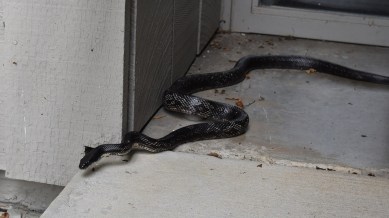📣 For more lifestyle news, click here to join our WhatsApp Channel and also follow us on Instagram
Can a non-venomous snake be dangerous to humans?
According to Encyclopædia Britannica, most snake species are non-venomous; over 70% of the 3,700+ known snake species fall into this category

When most people think of dangerous snakes, their minds immediately go to the venomous ones: cobras, vipers, or rattlesnakes. But is it possible for non-venomous snakes to pose a threat to humans? Surprisingly, the answer is yes, though not in the way you might expect.
A non-venomous snake lacks venom glands or does not inject venom through a bite. Instead, these snakes rely on constriction, blunt-force methods, or ambush predation to capture and kill their prey. Common examples include boa constrictors, pythons, and rat snakes.
monthly limit of free stories.
with an Express account.
According to Encyclopædia Britannica, most snake species are non-venomous; over 70% of the 3,700+ known snake species fall into this category. These reptiles serve important roles in ecosystems by controlling rodent populations.
So, can they be dangerous to humans?
Yes, under specific circumstances:
1. Constriction accidents
Large non-venomous snakes like boas and pythons kill their prey by wrapping around them and squeezing until they suffocate. While rare, there have been documented fatal attacks on humans, particularly children or small adults.
Reticulated pythons (which can grow over 20 feet) have been responsible for human deaths in Southeast Asia and parts of Indonesia.
2. Bites and infections
Non-venomous snakes can still bite, especially if threatened or handled improperly. Though the bite may not be venomous, it can break skin and lead to secondary bacterial infections if not treated.
According to the CDC, any wild animal bite carries risk of infection and should be cleaned and monitored carefully.
3. Zoonotic disease risks
Snakes, like many reptiles, can carry salmonella on their skin, even if they appear healthy. Handling a non-venomous snake and then touching your mouth or food can transmit the bacteria. The World Health Organisation (WHO) advises proper handwashing after contact with reptiles, especially for children.
4. Psychological or situational danger
Even a harmless snake can cause accidents due to panic. There are cases where people crashed cars, fell, or suffered heart attacks trying to escape a non-venomous snake. The fear factor shouldn’t be underestimated.
Who’s most at risk?
- Children and pet owners unfamiliar with reptile behaviour
- People in rural areas with large snakes used for pest control
- Reptile handlers or zookeepers dealing with large constrictors
- Untrained exotic pet owners
Species like corn snakes, king snakes, and ball pythons are commonly kept as pets and are considered docile. However, experts advise understanding the specific size, strength, and care needs of each species. Even non-venomous snakes need secure enclosures and careful handling to prevent escape or injury.
📣 For more lifestyle news, click here to join our WhatsApp Channel and also follow us on Instagram